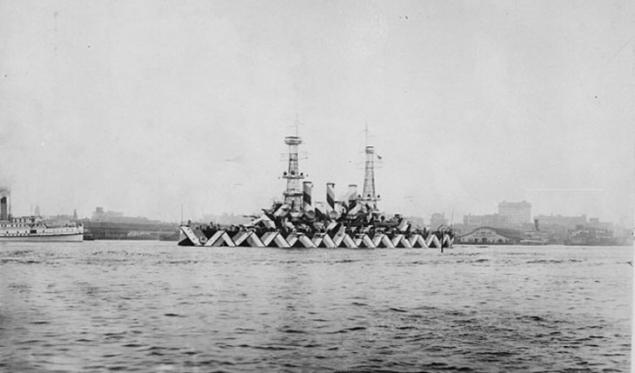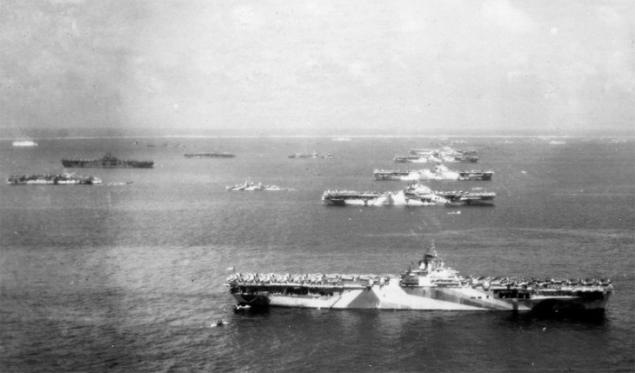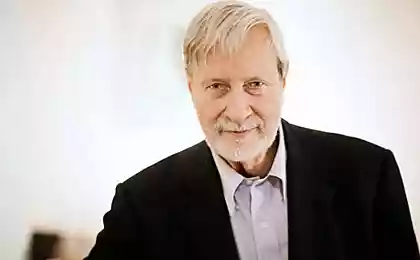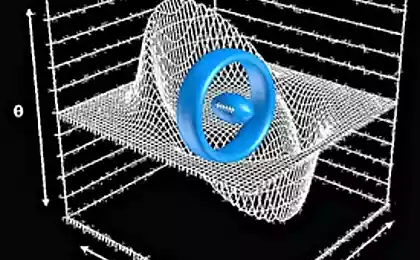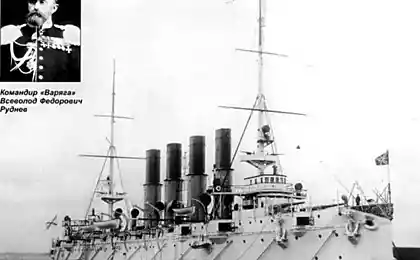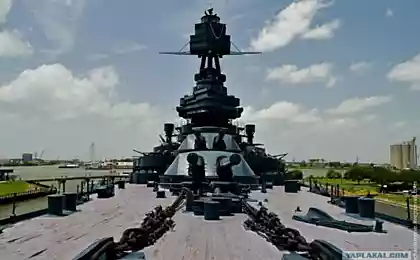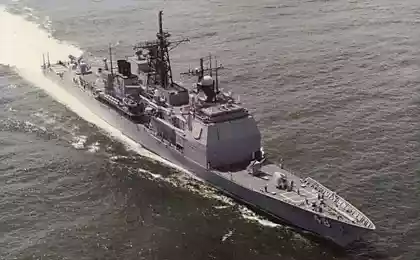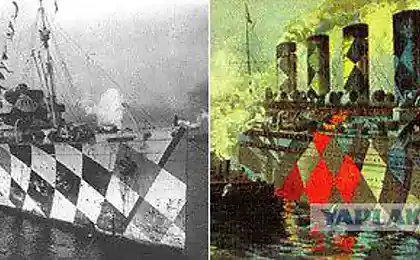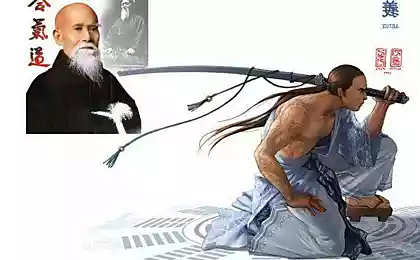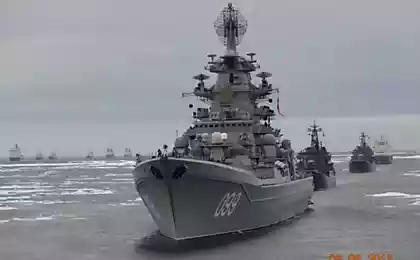743
How to sink the warships through art
Benefit camouflage military acknowledged only during the First World War. Around the same time he began to appear not only in the form of soldiers and combat equipment. The site tells the story of the unusual occurrence of camouflage, so-called "pattern is deformed».
British short called this wild way to bring down the enemy confused Dazzle, more verbose Americans called camouflage Razzle Dazzle (turmoil) - both those, and others saw it as the last chance to confuse the deadly submarine of the German army.

Inventor h2> Norman Wilkinson, a British illustrator, served on a submarine of the Royal Navy and knew firsthand about the problems experienced by the English Navy. The German submarine cruisers easily drowned because they could accurately determine the size of the target and the distance to it. Norman solved this problem by the invention of a new type of camouflage: Dazzle, which can be translated as "turmoil" prevented visual definition purposes.
essence h2> Norman based his method on the recently-style pop art - cubism. Officer and a Gentleman easily realized that the volume characteristic of the Cubist paintings, can be confusing the enemy gunners.
Now h2> The development of technology has put an end to this type of camouflage. Rather, its military use: optical devices to cheat in such a way has not worked. But, Razzle Dazzle instantly caught the post-war generation - This type of camouflage is still relevant and is often used in the creation of youth apparel lines.
British short called this wild way to bring down the enemy confused Dazzle, more verbose Americans called camouflage Razzle Dazzle (turmoil) - both those, and others saw it as the last chance to confuse the deadly submarine of the German army.




